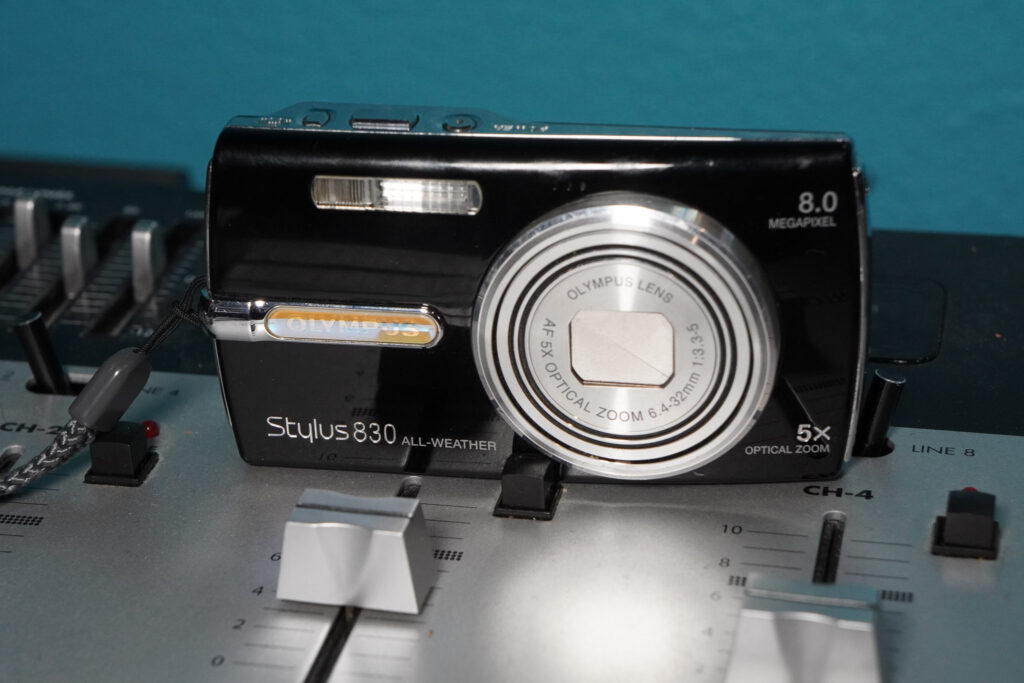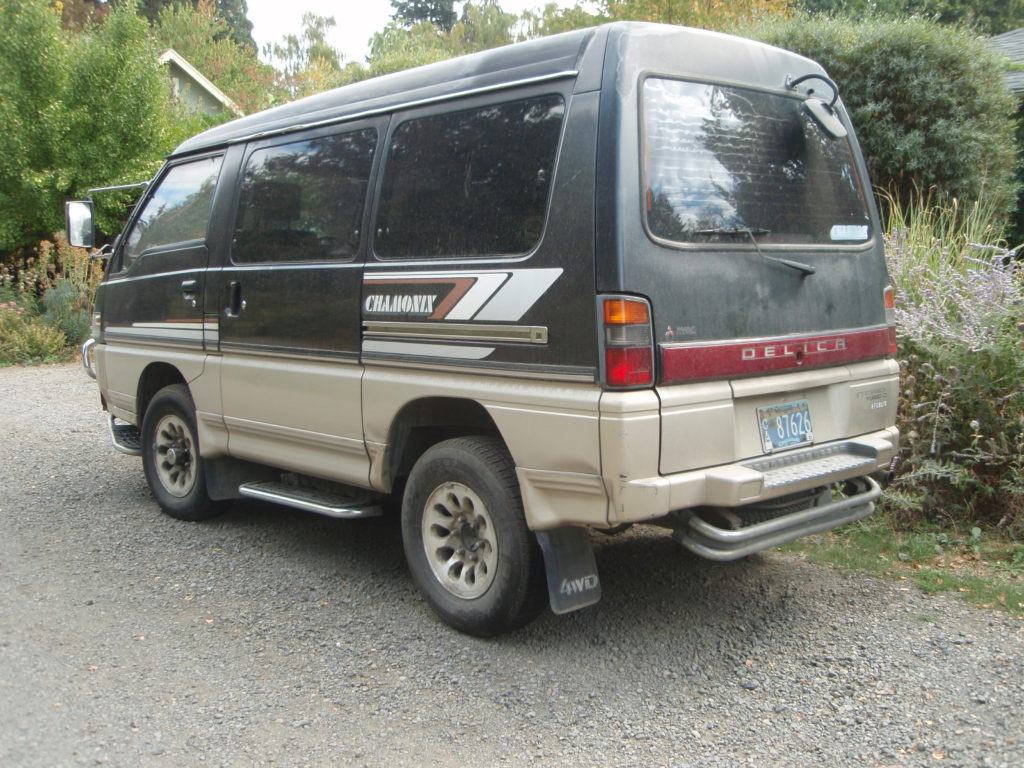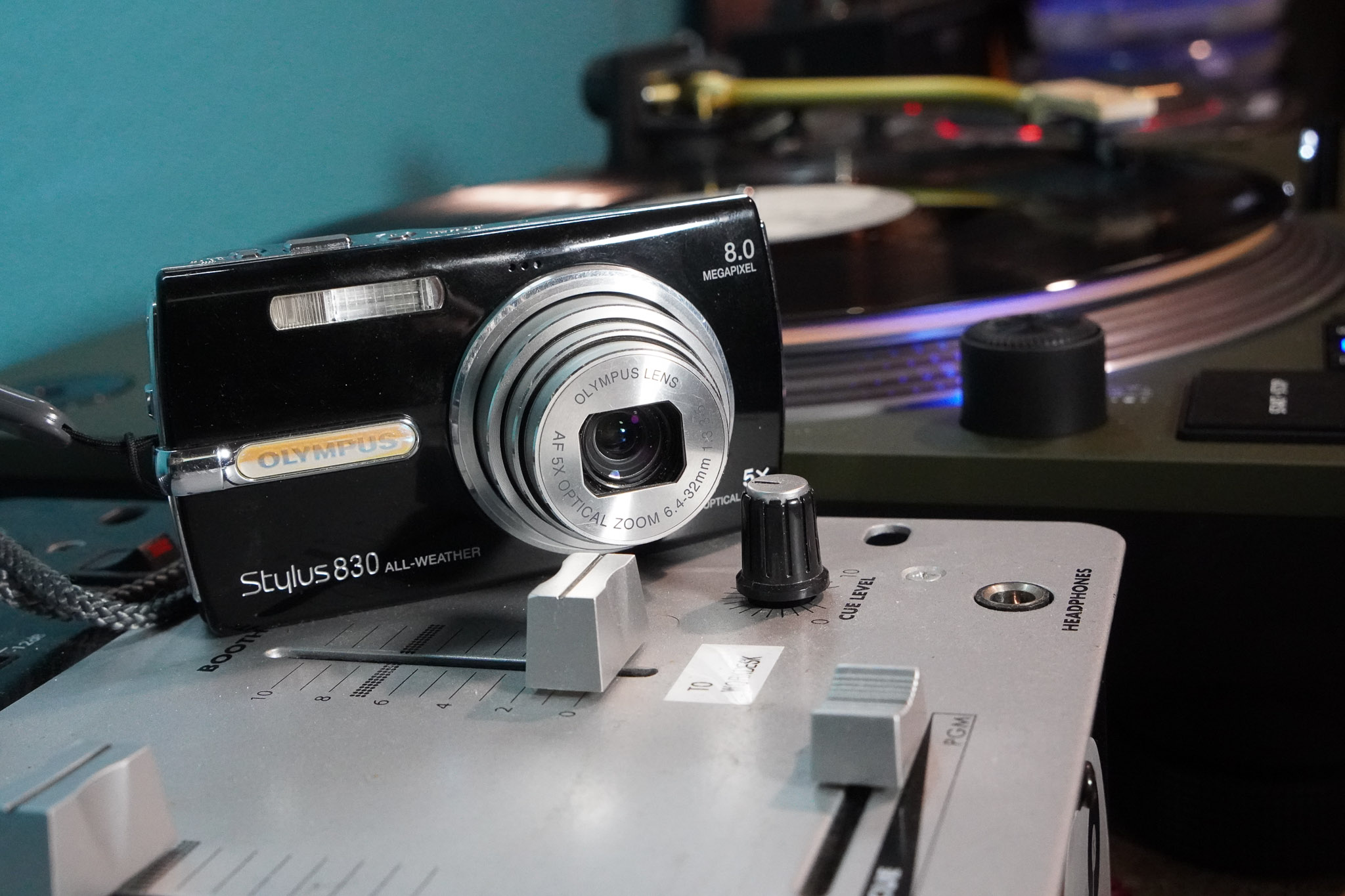I’ve been monitoring this apparent digicam revival, and have noted that the true connoisseurs have a particular affection for the CCD sensors these cameras contained from their invention in the late 90s through the first decade of the new century when the CMOS sensor took over. Wanting to re-check this out, I thought it might be fun to take a CCD digicam for a spin.
Rather than searching through thrift store bins and the bottom barrel of eBay, I remembered that I still had my circa 2007 Olympus Stylus 830. I’d actually tried to sell it at a camera buying event some six years ago, but there were no takers, and I thought it too nice to donate. I recall relatively pleasant experiences using it, and appreciating its 5x zoom lens packed into a really tiny body about the size of a deck of cards. So I dug it out and charged it up.

I have to say I find the CCD fetish to be curious. In particular, one of the big benefits touted by the digicam enthusiasts is that the images it produces are more film-like than those from today’s digital cameras. Yet, my memories of the 2000s, when I got my first digicam, are all about the film vs. digital debates, and the many claims of how inferior digital was to film, especially digital point-and-shoots. Complaints were that their pictures looked “too digital.”
With the supply of working film cameras dwindling, and the price of them increasing, along with the cost of film, I totally get why photographers are looking for a film-like experience at a much lower cost. I just didn’t quite think it would be the lowly, but serviceable, CCD sensor.
Battery charged, and obsolete xD memory card installed, I took the Stylus 830 for a photowalk. Immediately, I was reminded why I gladly replaced it about three years later. It pretty much has just one mode – program automatic – and the autofocus is on the slow side. The 5x zoom lens is nice enough, but not particularly sharp. A too-high percentage of my outdoor shots were out-of-focus or poorly exposed. It was not particularly fun to use.

I seem to remember my previous two digital cameras – a 2003 Olympus Stylus 300 and a 2005 Olympus Stylus 800 – were more fun, and responsive, even if they had smaller zooms (3x) and one had many fewer megapixels (3). The only reason I don’t have them today is that they both stopped working and I could not get them repaired.
Hoping to jazz things up even a little I searched through the menus to see if there were any creative picture modes. There are plenty of scene modes meant to set the camera to take better pictures at night, through glass or at sunset, but what I was really looking for was something like a black-and-white, sepia or other more dramatic mode. There is none. I’m particularly surprised there isn’t even a black-and-white mode, since that seems otherwise to have been nearly mandatory on even the cheapest digicams.
To me, fun is the reason to use an old forgotten digicam, and my old Stylus 830 completely failed in that regard.
The pictures, they’re fine I guess. Straight out of the camera they’re not particularly vibrant – though I was shooting on a pretty overcast day. There’s aggressive noise reduction that smears details in anything but the brightest light, and the lens is pretty mediocre, too. I guess maybe those flaws add up to pictures looking more film-like if your definition is “much more imperfect.”

My poor re-experience of this camera does not mean I’m dismissing the digicam revival. As I wrote before, I’m all for people resuscitating old technology and enjoying it anew. Moreover, I really do enjoy my 2006 era Kodak V570 digicam that I bought three years ago, calling it a “digital Lomo” because I don’t believe the digicam revival had quite kicked off yet.
I’m not sure I wholly buy into the CCD sensor fetish. Perhaps it’s about the noise that creeps into most pictures shot at 400 ISO or above. Indeed, noise resistance is a reason why CMOS sensors gradually took over in the last decade, and film rated at ISO 400 or above is definitely grainy and that can look similar to digital noise when underexposed.
I certainly won’t recommend anyone run out to buy an Olympus Stylus 830 for a fun experience shooting a 2000s CCD digicam. If you stumble on one for a cheap price or you find one for free, then go for it. But I’m pretty sure there are better specimens worth your time and money.
My best advice is to keep your eyes open and take what comes your way, especially cheaply. I hate to see these trends of rediscovering inexpensive, once discarded technology turn into object fetishism. There have to be millions of forgotten digicams out there, so don’t let a TikToker or YouTuber convince you that there’s one special model or lineup you absolutely have to get. Keep trying cheap or free ones until you encounter the one that’s fun for you.
